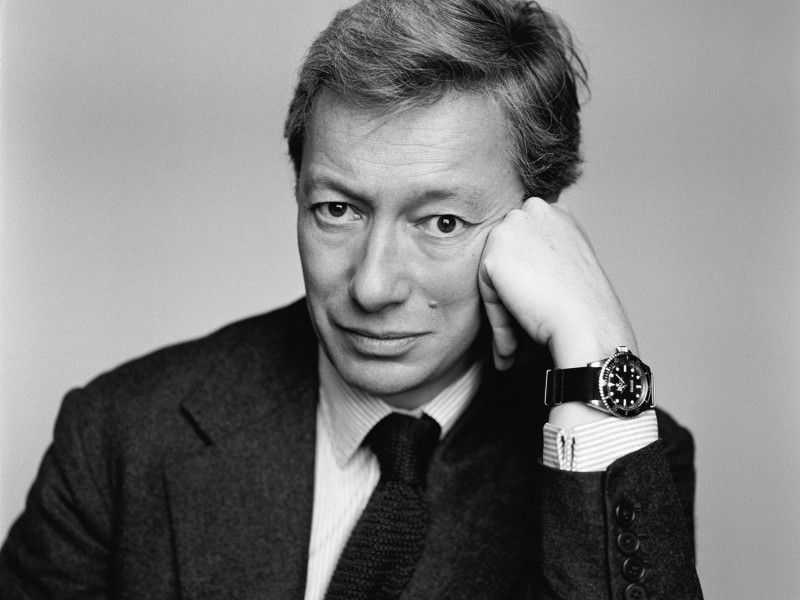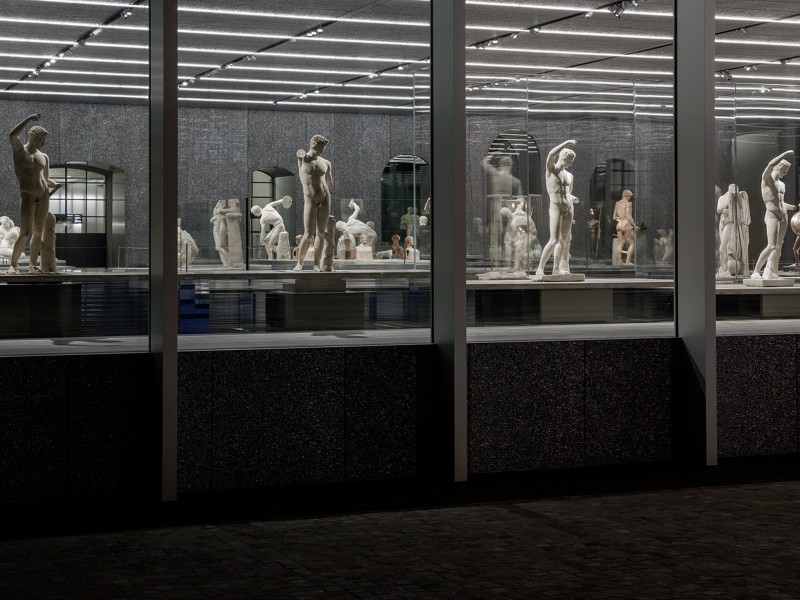It was during his high school years in Montana that Lonney White became “confused by the trendiness of colour” and shunned the palette entirely from his sartorial identity. He was instead solaced by the timeless allure of monochrome, with the stylistic code since creeping into his aesthetic as a neo-minimalist painter, sculptor and furniture designer.
“Everything I do in my art and in my life is monochromatic,” the artist reveals over the phone from Chicago—where he is now based. “I feel that the artwork I make, the clothes I wear, and the furniture and objects in my home, should all speak the same language; they should all agree with one another. Monochrome allows for that.”
Guided by an intuitive current, White uses the techniques of moulding, fusing and spilling to transform metal, bronze, steel, concrete and wax into pieces that bring to mind extraterrestrial surfaces and flattened exoskeletons. During the sculpting and pouring process, the artist often welcomes the “erratic behaviours” carried by these mercurial elements, and chooses to expose, instead of smooth over, the indentations, holes and other surprises that may surface.
“It’s more enjoyable for me when I’m not at odds with my materials,” he explains. “At first, I have a gesture of what might happen with my work ... but sometimes the bronze may not cast perfectly, or the metal will move in the opposite direction to what I anticipated. I learnt early on not to over-finesse things, or to fight with materials and force them to be perfect. I’m more interested in embracing the capabilities of these materials, and leaving no room for embellishment or artifice.”
“My materials are sourced from all sorts of places,” White says of his Frankenstein assemblage. For his bronze fabrications he uses a local foundry called West Supply, while a different supplier provides the metal alloys for his paintings, and another for his steel. This year he visited a sheep farm outside of Chicago to source wool for his wet-felting.
While he describes his works as “subdued and non-representational”, with primitive titles devoid of fanfare, he enjoys hearing the Rorschachian thoughts offered by viewers. “Someone recently told me my paintings looked like sea lily fossils,” which he says is plausible, given the works resemble relics “once alive” due to an animated molten process.
White studied painting and sculpture at the University of Montana, and at one time sold his car so that he could afford to experiment with bronze (he ended up creating a desk entirely from the material). In 2008, he relocated to Chicago to expand his interest in interior architecture and furniture design at the School of the Art Institute of Chicago. He experimented on pieces of various compositions and scales, from ornamental bronze-casted spill-offs, to metal-swatted milky wax paintings spanning a 20 foot sculpture caked in steel and concrete. This oscillation between disciplines is a response, he says, “to this contemporary moment where people are hungry for artwork that traverses vocational boundaries.”
White counts Montana based furniture and accessories designer Ty Best, who he trained under, early in his career, as a huge influence on his own work. “I’m inspired by Ty’s uncompromising attitude towards his practice” White says. “Stepping into his studio is like being in a different world; his vision is so singular and everything follows suit. Ty’s aesthetic is inspired by the natural environment of Montana, but it’s also a stark and dramatic break from the cultural environment there.”
Work is steady for White, with painting commissions funnelled through his representative galleries Holly Hunt and LMD/studio. It often starts with a dialogue between the artist and the clients about desired parameters and palettes, and White tends to pull out examples of his previous designs to get a feel for the clients tastes and vision. He then transforms this feedback into initial sketches on paper.
“But I’ll never show a client my sketch,” he divulges. “I’ve had problems in the past where I present clients with a drawing and they fall in love with it, but then I realise I am not able to execute the sketch! So now I keep my sketches intentionally vague to allow room for spontaneity.”
White counters that while commercial work provides him with the sustainability to pursue the trial driven aspects of his practice, he is now, at 33, looking to dedicate the next phase of his career towards creating more monastic and challenging pieces. This year, he tackled his most complex creation yet: a 10-foot-wide EXO Sofa of bronze exoskeleton, leather, wool, ebonised plywood and patinated steel. He explains the process: “I start by moulding the initial organic shape for the sofa from a wet felting method—this involves laying the raw wool out on a bamboo screen and placing dish soap over the wool, which affects the fibre’s PH balance. Then I roll up the wool and apply boiling water.” From there, the artist works the screen by hand until fibres start felting and fusing together, sculpting the wool free form, resulting in natural holes. A wax is then built around the forms and then finally cast in bronze. The EXO Sofa was showcased in The Collective Design Fair in New York in spring 2015, alongside artists Phoebe Knapp, Parts of Four and the dark lord of fashion and design, Rick Owens. “Because we shared a similar stylistic dialogue,” says White, “our works were curated together into one space in a way that enabled the works to feed from one another”.
Related Features
-
91
-
-
-

